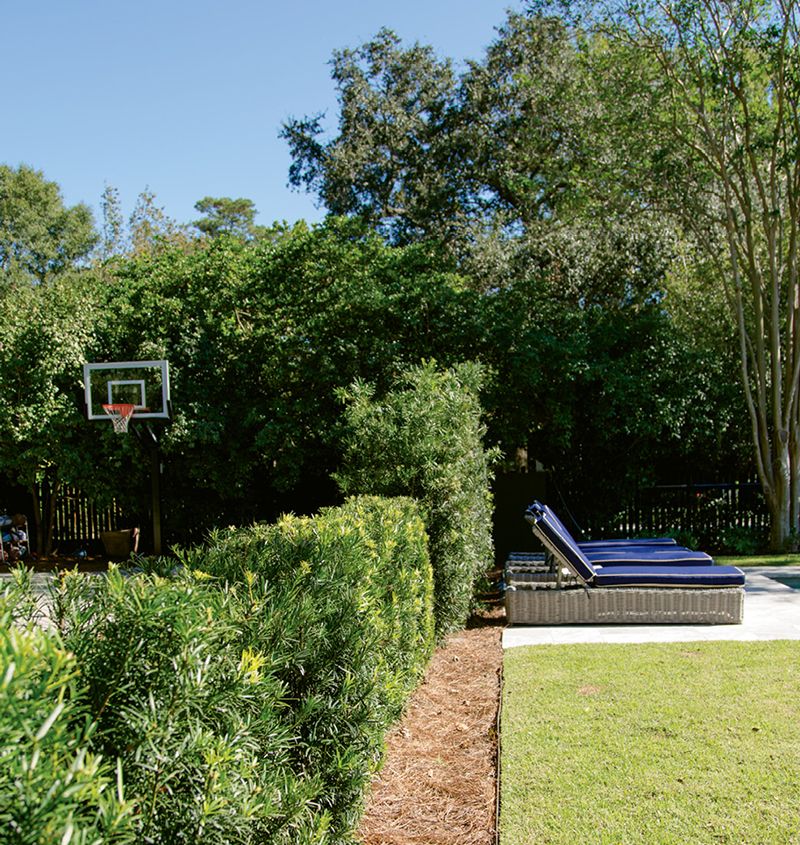Grow a more intimate green space with podocarpus walls

In this West Ashley backyard, Paul Freeman of Freeman Landscape Architecture used a podocarpus hedge to separate the kids’ play area from the pool.
You’ve heard of garden rooms—areas carved out of larger green spaces using walls of trees, shrubs, vines, fences, or other materials—but have you considered their potential for your own landscape? A careful design can transform even the smallest urban patio into a lush, sound-buffering private garden. Larger yards can be divided into more intimate areas, so that relaxing by the pool doesn’t mean refereeing your kids’ game of basketball, for example (see the Ferguson family’s West Ashley backyard at left).
Or maybe you don’t need an entire “room.” Folks often find that as the landscape changes, the placement of a neighbor’s window or garage may no longer be so optimal. Let this be an opportunity to consider screens of soft green walls rather than rigid, static fencing.
But what to “build” your walls with? A popular favorite is Podocarpus macrophyllus, a slow-growing, salt-tolerant, evergreen shrub that’s easily trained into a hedge. It can be manicured to work with a formal design or left lightly pruned for a more natural look. Podocarpus thrives in full sun or shade, so it is perfectly suited to span a property line with a wide range of lighting conditions.
When installing a hedge, be sure to leave enough room at pathways or points of entry for the plant’s mature size. If space is limited or you want to plant in containers, check out the dwarf variety, ‘Pringles’, which will grow to five to eight feet in height. ‘Maki’ is a larger variety, topping out at 15 to 25 feet when left untrained, although you can keep it pruned to 12 feet.
Plant your podocarpus in nutrient-rich, well-draining soil, and water regularly for the first year. The shrubs will become more drought-tolerant as they mature. During the growing season, apply a slow-release 16-4-8 fertilizer and watch your living walls reach higher.